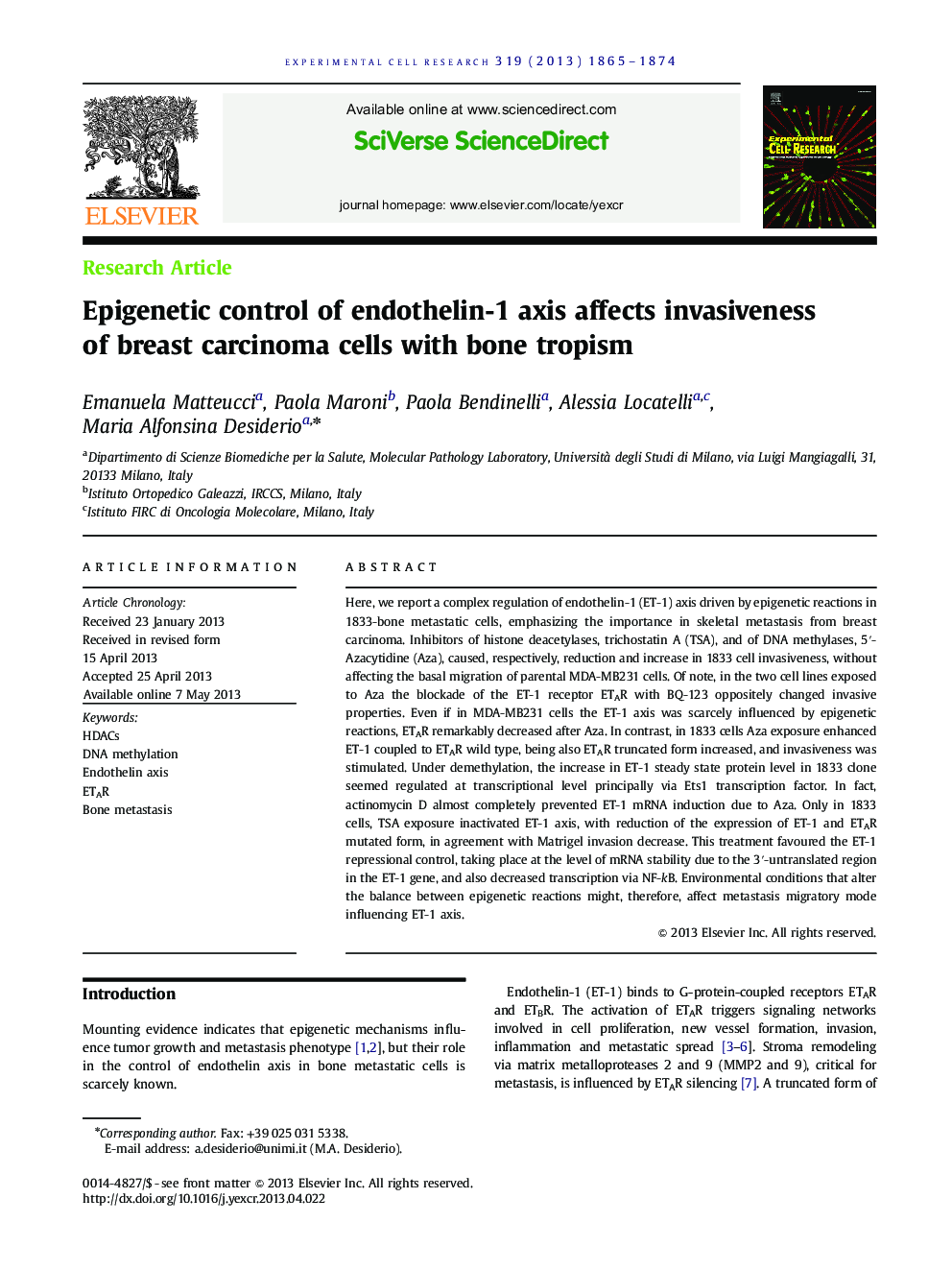| Article ID | Journal | Published Year | Pages | File Type |
|---|---|---|---|---|
| 10904257 | Experimental Cell Research | 2013 | 10 Pages |
Abstract
Here, we report a complex regulation of endothelin-1 (ET-1) axis driven by epigenetic reactions in 1833-bone metastatic cells, emphasizing the importance in skeletal metastasis from breast carcinoma. Inhibitors of histone deacetylases, trichostatin A (TSA), and of DNA methylases, 5â²-Azacytidine (Aza), caused, respectively, reduction and increase in 1833 cell invasiveness, without affecting the basal migration of parental MDA-MB231 cells. Of note, in the two cell lines exposed to Aza the blockade of the ET-1 receptor ETAR with BQ-123 oppositely changed invasive properties. Even if in MDA-MB231 cells the ET-1 axis was scarcely influenced by epigenetic reactions, ETAR remarkably decreased after Aza. In contrast, in 1833 cells Aza exposure enhanced ET-1 coupled to ETAR wild type, being also ETAR truncated form increased, and invasiveness was stimulated. Under demethylation, the increase in ET-1 steady state protein level in 1833 clone seemed regulated at transcriptional level principally via Ets1 transcription factor. In fact, actinomycin D almost completely prevented ET-1 mRNA induction due to Aza. Only in 1833 cells, TSA exposure inactivated ET-1 axis, with reduction of the expression of ET-1 and ETAR mutated form, in agreement with Matrigel invasion decrease. This treatment favoured the ET-1 repressional control, taking place at the level of mRNA stability due to the 3â²-untranslated region in the ET-1 gene, and also decreased transcription via NF-kB. Environmental conditions that alter the balance between epigenetic reactions might, therefore, affect metastasis migratory mode influencing ET-1 axis.
Related Topics
Life Sciences
Biochemistry, Genetics and Molecular Biology
Cancer Research
Authors
Emanuela Matteucci, Paola Maroni, Paola Bendinelli, Alessia Locatelli, Maria Alfonsina Desiderio,
